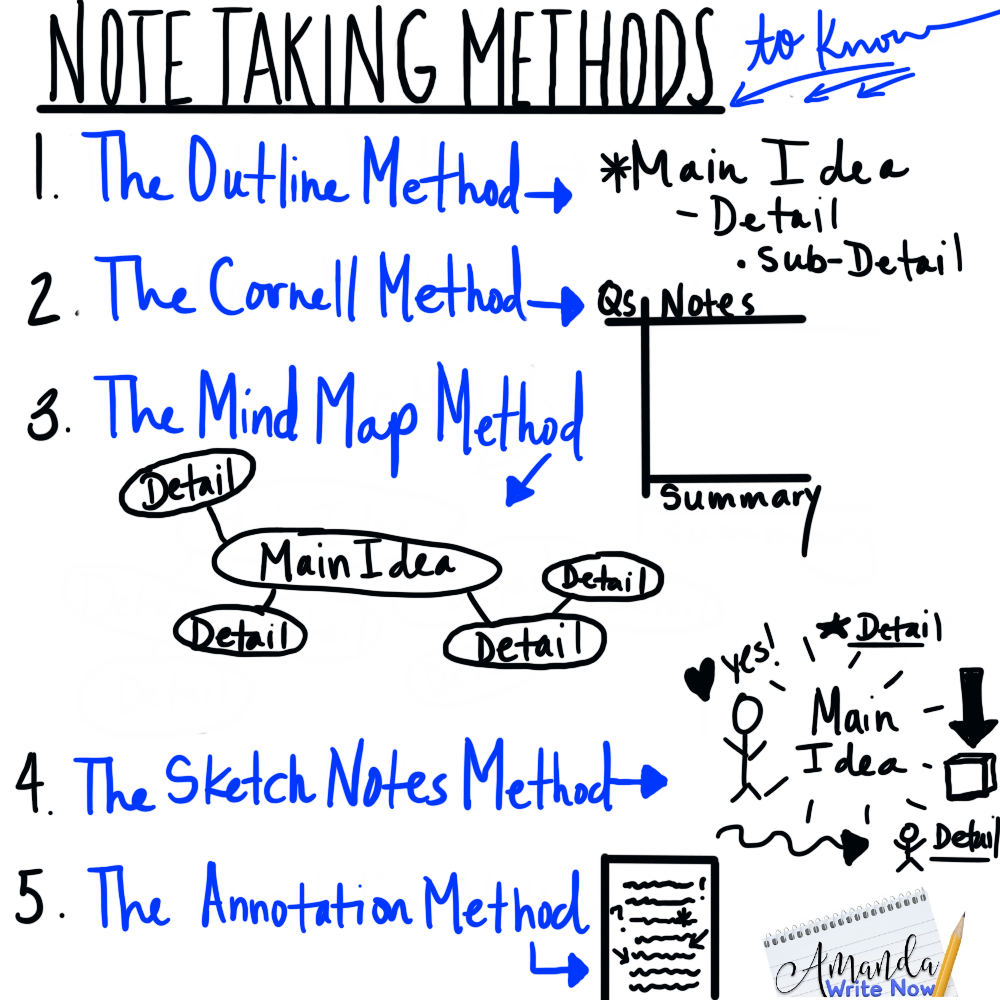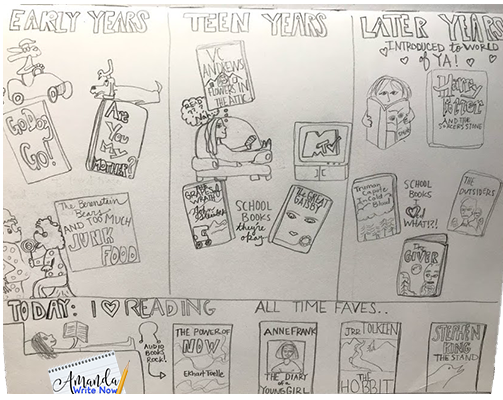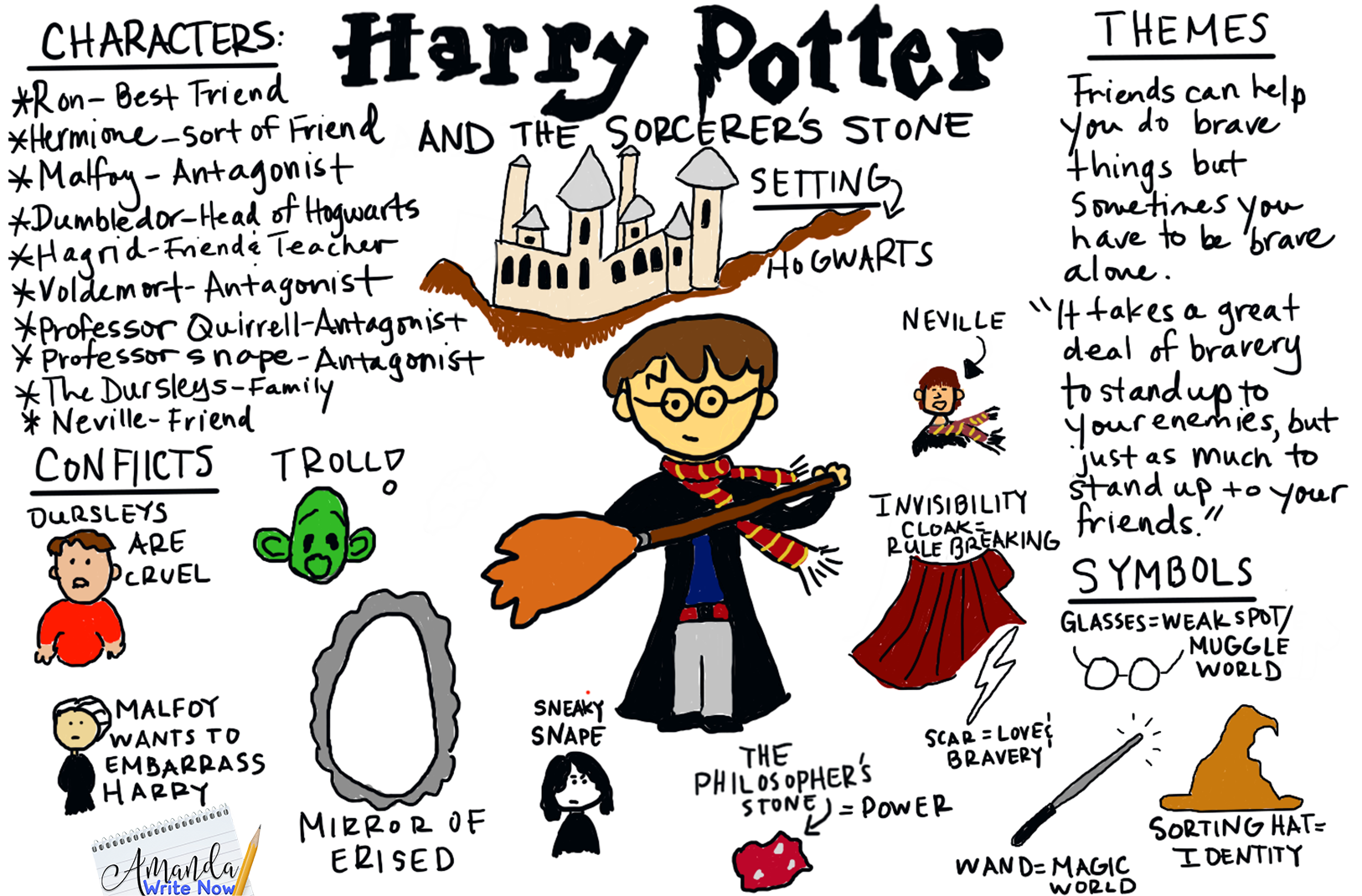How to Teach Sketchnotes (and Reduce Stress)
This blog post will take you step-by-step through the process of introducing your students to sketchnotes. If you’d like all the materials, videos, and tools necessary to teach sketchnoting in the classroom check out this Stress Reducing Engagement Pack, designed specifically for teachers who want to integrate relaxing and engaging units this school year!
1. INTRODUCE SKETCHNOTES
Before you can assign students sketchnoting activities, you must help students understand what sketchnotes are first. Think of sketchnotes as regular notes that also include doodles to represent the ideas in the notes. Sketchnotes can also be referred to as visual note-taking. The most important thing to remember (and teach students) about sketchnotes is that you don’t have to be “artistic” in order to do them. You only need to be able to draw a few basic shapes in order to try your hand at sketchnotes!
Now that you are familiar with what sketchnotes are, how do you teach students about this type of note-taking? Well…YouTube of course! There are many awesome videos introducing students to sketchnotes on YouTube. Here is one of my favorite videos about sketchnotes. If you’d like more comprehensive videos introducing students to sketchnotes check out pack!
2. TEACH TYPES: ACADEMIC VS. PERSONAL
There are two different types of sketchnotes: academic and personal. Academic sketchnotes are usually done quickly and during a lecture or while watching a video. They usually turn out fairly messy and may need to be redone, edited, revised and reorganized during the notes review process.
Personal sketchnotes are done at a more leisurely pace. They might be done in a journal, on a plain white piece of paper or with an iPad and Apple Pen. Personal sketchnotes can be about all sorts of topics such as things you are passionate about. Sketchnotes can document moments in your life like the reading life sketchnotes below.
Sketchnotes can also be used to record your travels or even as a way to think through a big decision.
But, what about one-pagers like the Harry Potter example below? Would this fall into the academic or personal category? It’s a little bit of both actually. One-pagers are usually done after reading a book, so this makes them academic. But they can be done at a leisurely pace, which makes them a bit more personal too.
Make sure to watch the video above for more details and examples that demonstrate these two types of sketchnotes. If you’d like more videos just like this one to show your students, check out the stress reduction engagement pack, it also includes videos to teach about other stress reducing topics: journaling and mindfulness.
3. PROVIDE EXAMPLES OF SKETCHNOTES
Sketchnotes are very popular these days! A quick Google image search using the keyword “sketchnotes” or “one-pagers” will provide you with many examples from teachers and students around the world. When you show these examples make sure to point out the different components that make up, not only sketchnotes but all types of notes:
Title
Headings
Sub-headings
Captions
Lines
Boxes
Icons/Symbols
Bullets
Dashes
Numbers
When you purchase this engagement stress reduction pack you not only get access to sketchnoting examples, videos, and lessons, you also receive materials to teach other stress reducing topics: journaling and mindfulness!
4. PROVIDE Activities
Students need opportunities to practice sketchnoting. You can start out by having students sketch about their hobbies. This is probably the quickest route toward success. Students are much more motivated when they can doodle about their interests.
After students have experienced the fun of doodling about their hobbies, guide them to begin sketching characters and conflicts from books then about articles they read and finally about TED talks they watch. Sketchnotes that are done with paper and pencil can be captured via a cell phone pictures and attached to a Google Classroom assignment.
Below are some more detailed directions you can use to support students in doing more fun sketchnoting activities:
Hobbies
The easiest way to get students into sketchnoting is by having them sketch their hobbies. Tell students to add a title such as “Some of My Favorite Things” at the top and then sketch those 3-5 favorites. They could also include headings and captions.
Books
Students can also do sketchnotes about books. These are also called one-pagers. If you have students do sketchnotes about books, make sure to give some criteria. For example the one-pager might include characters, conflicts, symbols and themes or the one-pager could be centered on the characters and their traits or documenting one symbol or all about the literary devices in a book. There are so many ways one-pagers can be done!
Articles
Sketchnotes are an excellent way to respond to articles read from The New York Times Learning Network, Newsela or in response to short stories from CommonLit or Wattpad . This is an excellent way for students to synthesize the most important takeaways from the articles they read.
TED Talks
Taking sketchnotes while watching a video or listening to a lecture is an important skill. There are so many wonderful TED-ed and TED Talks for students to watch, learn from and take notes about! Check out the playlist on the right that was created for teachers to use in their English class.
5. ALlow Students to Share
Often, teachers require students to take notes, but then it’s up to the students to find time to review them. We need to provide these review opportunities in class too. Students can learn and retain more information by sharing their notes with each other! This should happen much more in our classrooms. Before sharing, you might also consider having students redraw their notes (especially if they were done quickly during a lecture or while watching a video) so that they are more eye pleasing for an audience.
WHY TEACH SKETCHNOTES?
Sketchnotes force students to organize information, communicate what’s most important and differentiate between main ideas and details. Sketchnoting requires students to think about and document their learning. Even more importantly though, the doodling that is required when sketchnoting can relieve stress and improve focus according to multiple studies. During this pandemic we need stress reduction and focus activities more than ever!
Related Articles
A Memorable Kinesthetic Writing Lesson for Older Students (by Reading & Writing Haven)
One-Pagers as a Response to Literature (by Now Spark Creativity)
Sketchnotes: Paper Prep that’s FUN (by Now Spark Creativity)
ABOUT THE AUTHOR
Amanda is the author of amandawritenow.com and a collaborative blogger on Teachwriting.org.
Amanda Werner is a full time middle school English teacher in the Bay Area. She has been teaching for thirteen years and still feels like a novice. Every year is a unique and exciting challenge to inspire a new group of students to become avid readers and writers. Amanda reads educational literature voraciously and writes about how to implement reading and writing workshop on her website. Amanda received her B.A. in English Literature with an emphasis in Humanities at Western Washington University. In her free time, Amanda loves being outdoors with her husband and young daughter.






